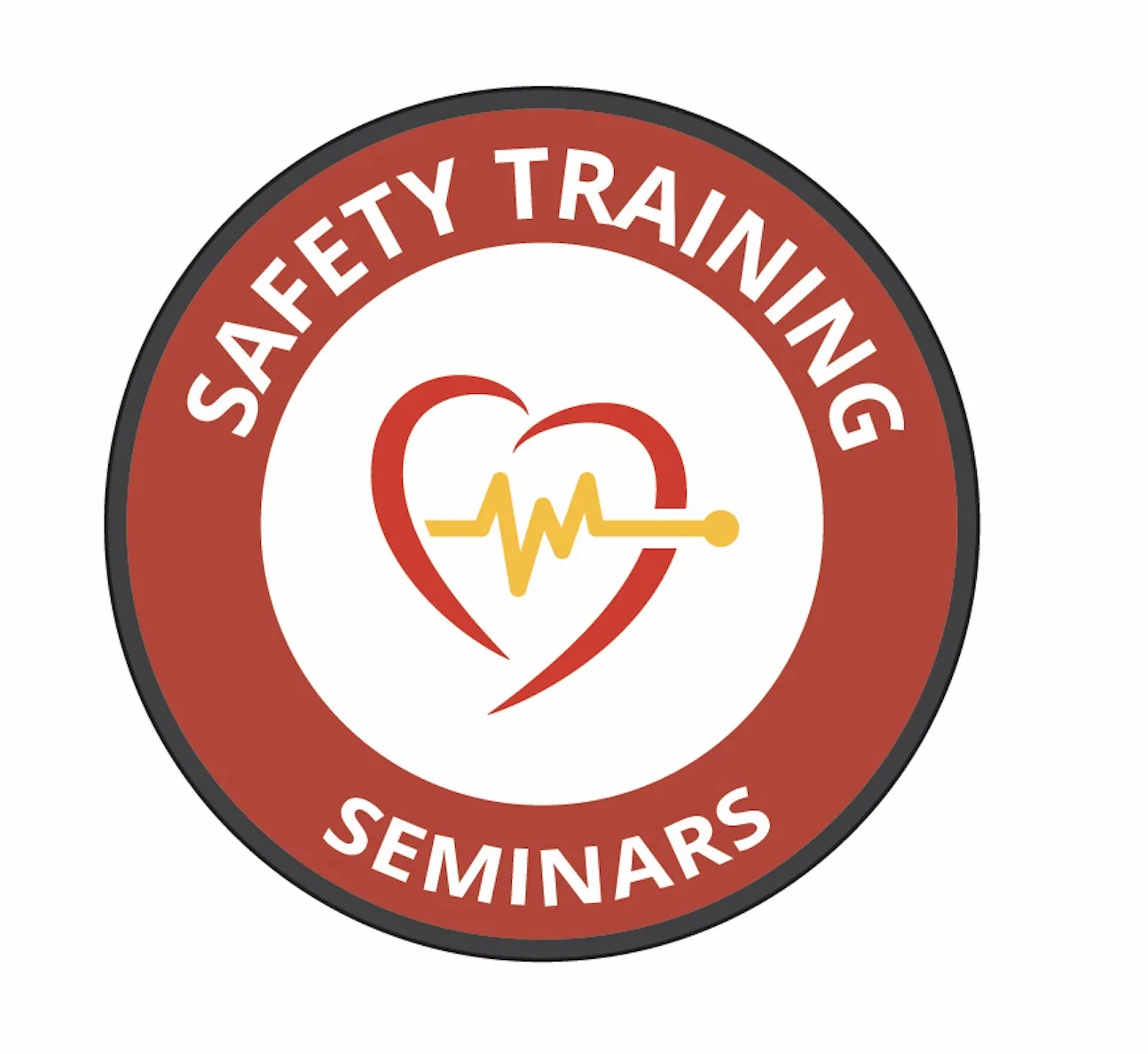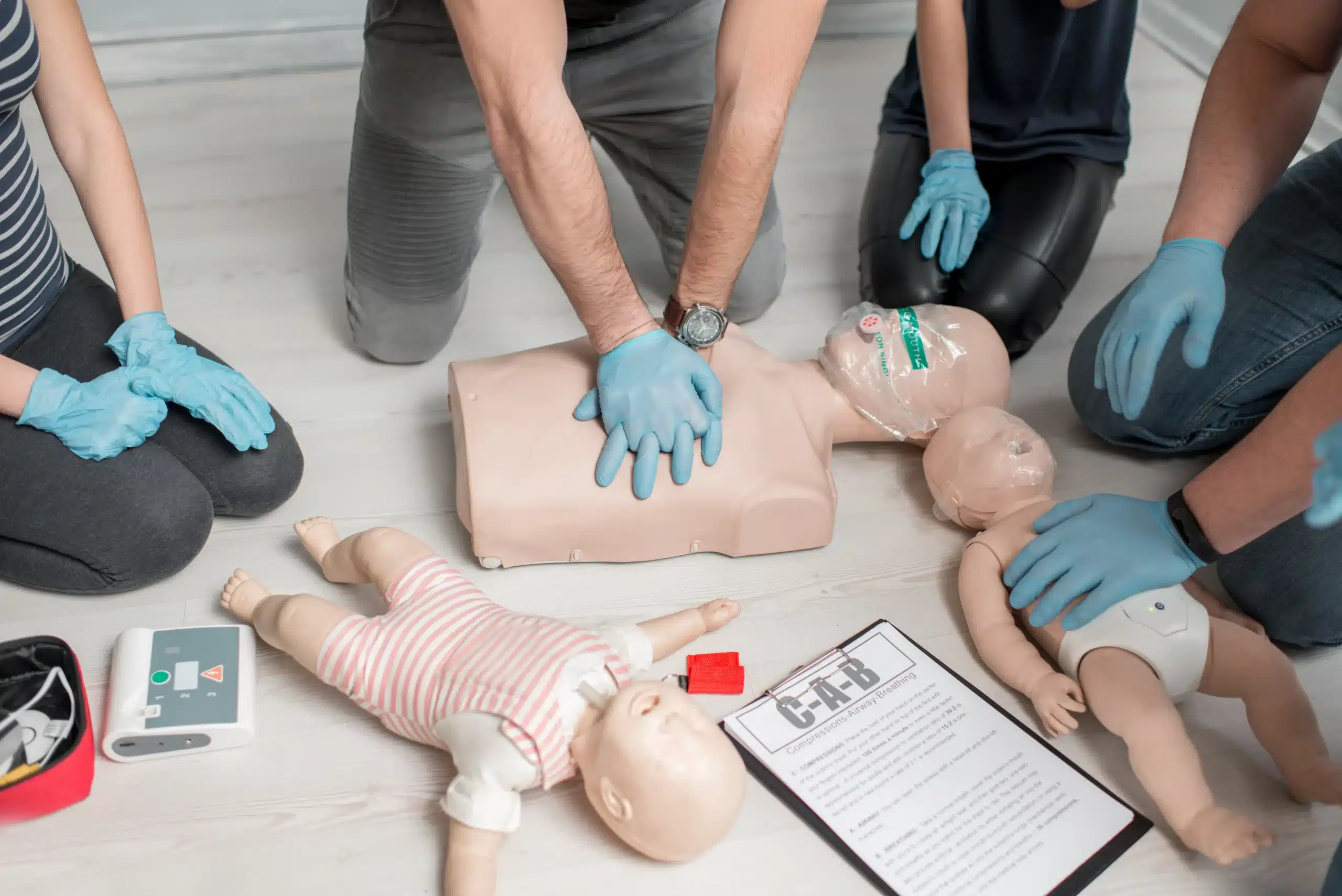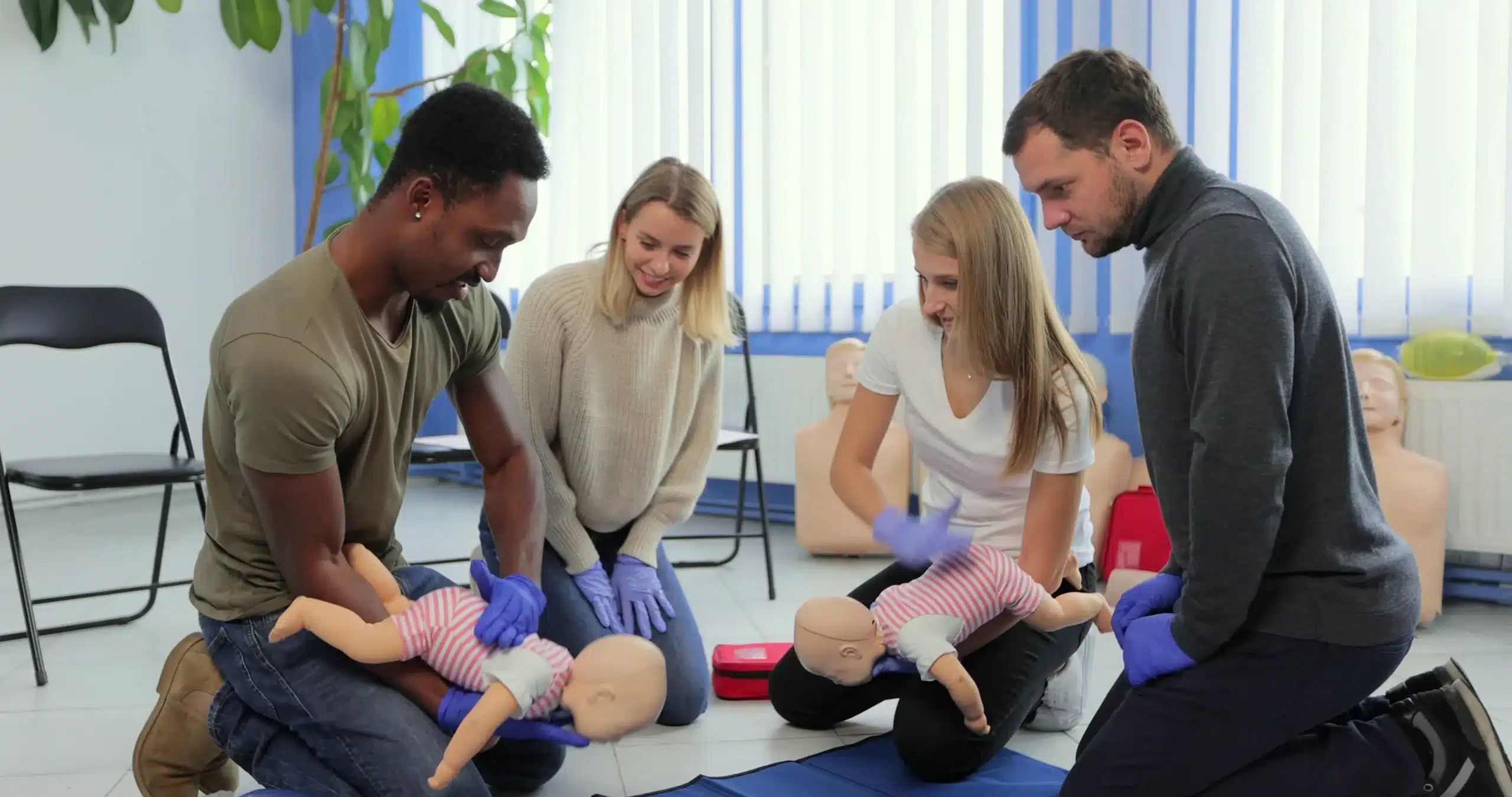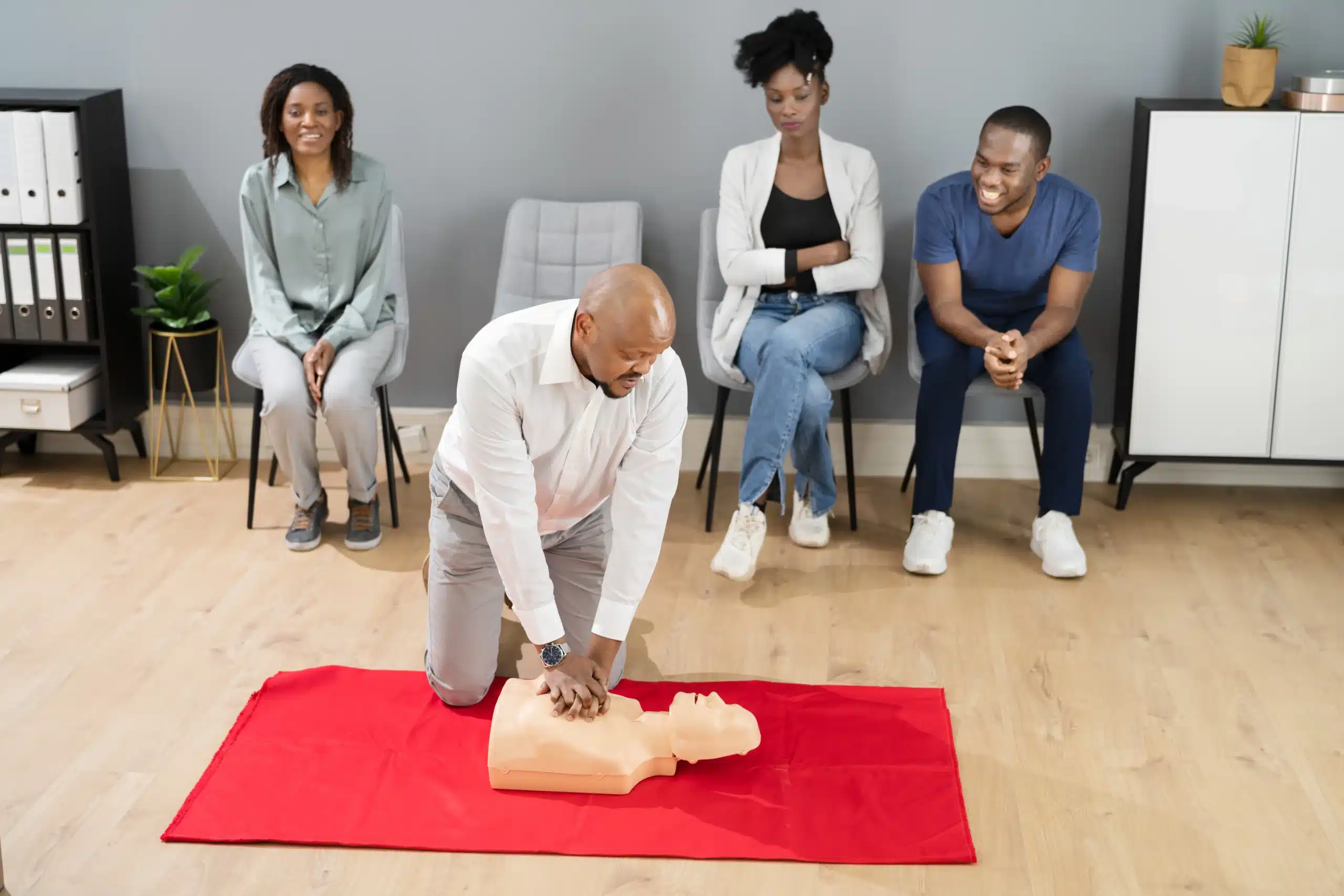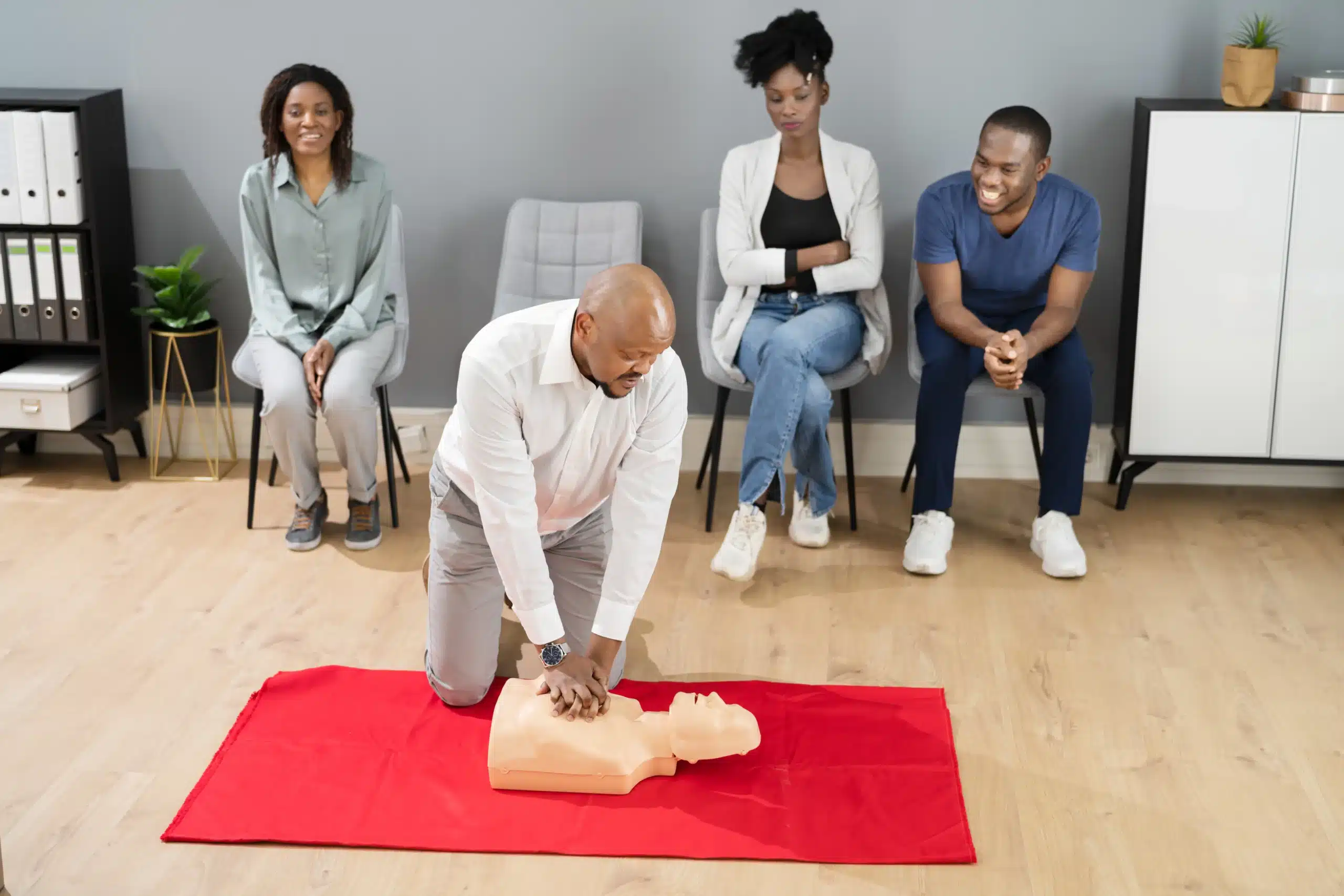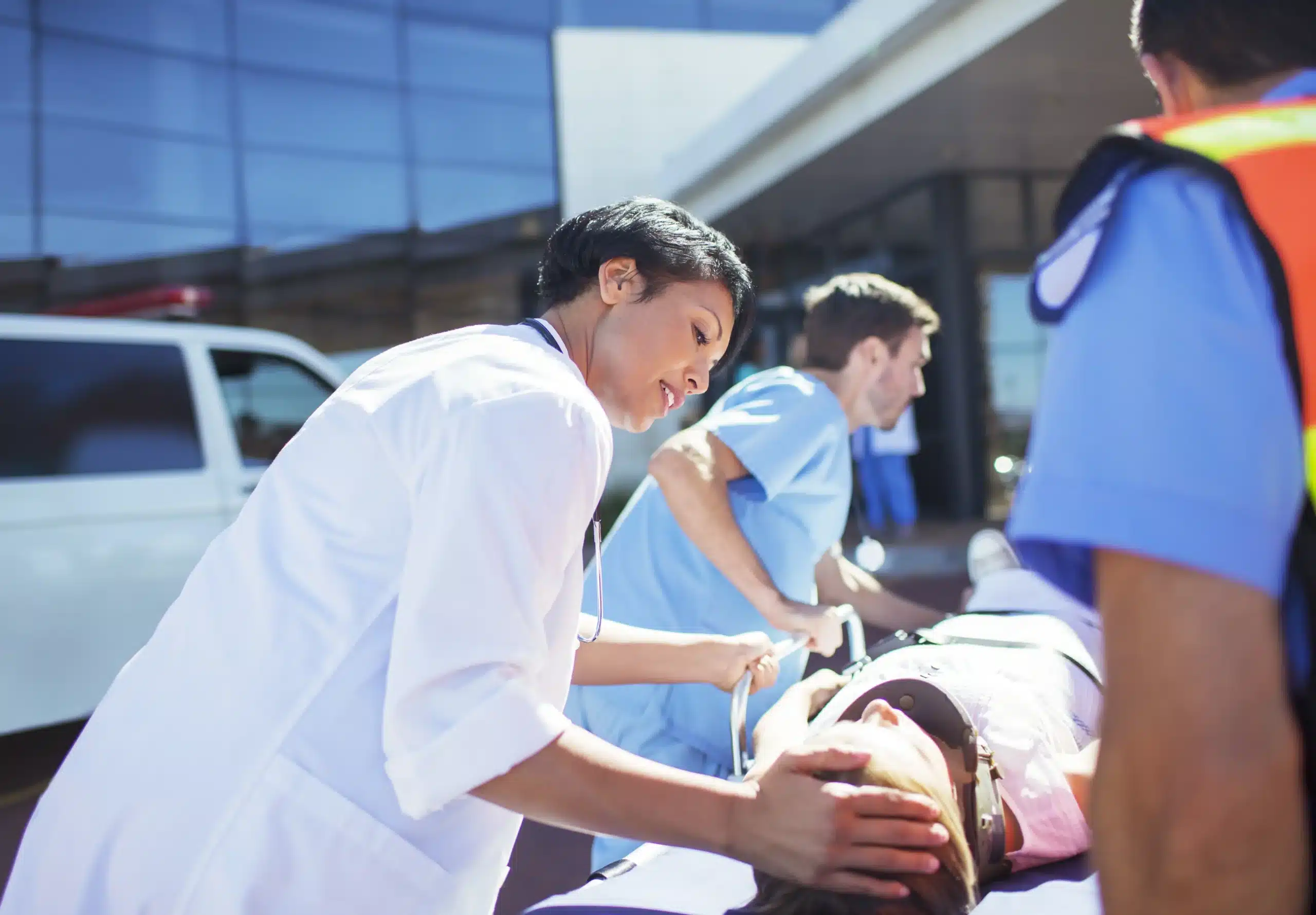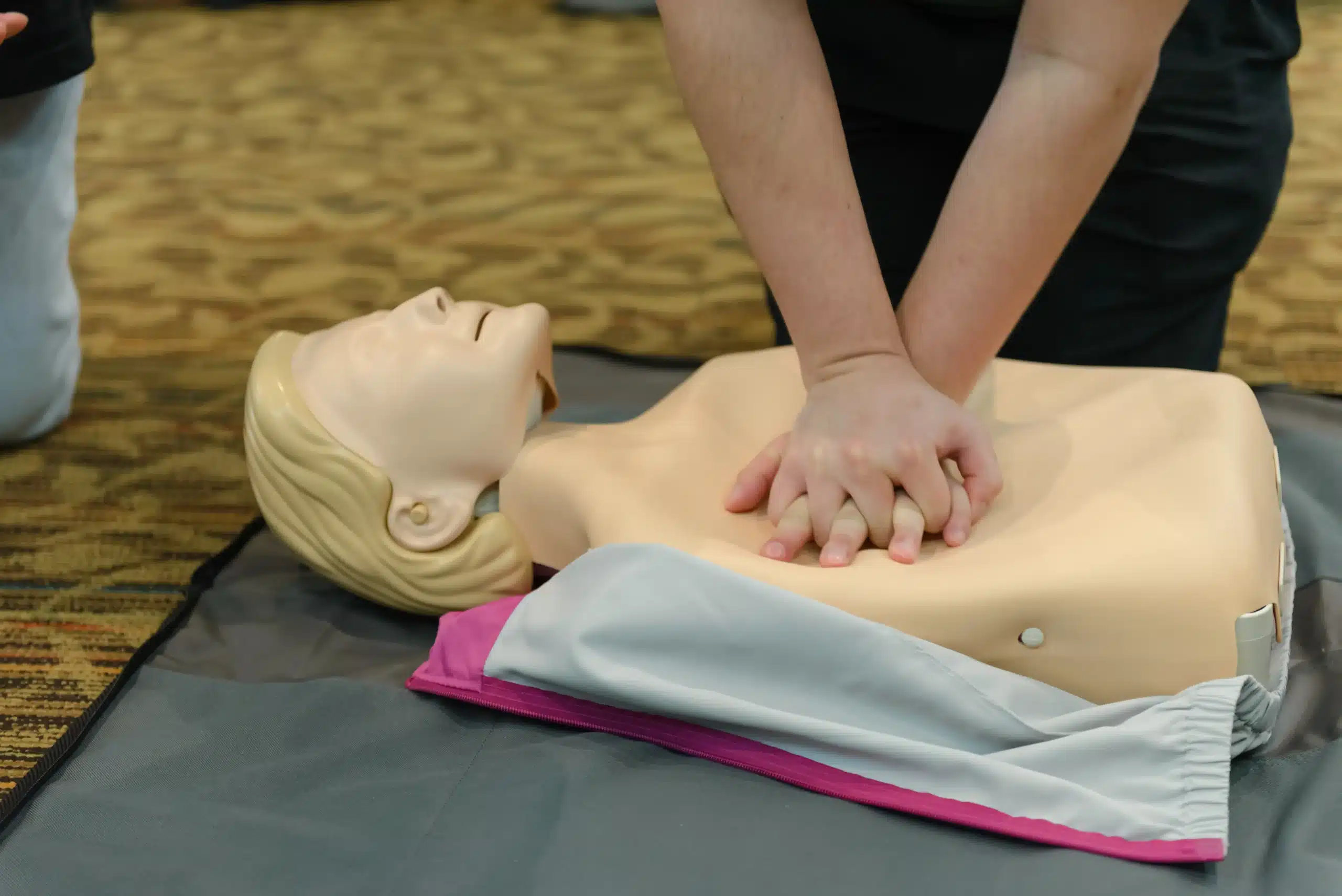Empowering yourself with life-saving skills has never been more convenient, thanks to the rise of blended learning programs like BLS Heartcode in San Francisco. This innovative approach to CPR training combines the flexibility of online learning with the essential hands-on practice of a traditional course. If you’re looking for a way to get your BLS certification that fits your busy San Francisco lifestyle, HeartCode BLS might be the perfect solution. This article will break down the benefits of this blended learning approach, explain what to expect from the course, and guide you through the process of finding a BLS Heartcode provider in San Francisco.
Key Takeaways
- HeartCode BLS fits your schedule: The blended learning format combines online coursework with a shorter, in-person skills session, offering flexibility for busy individuals.
- BLS certification empowers you: This credential equips you with essential life-saving skills, valuable for both personal and professional growth. It builds confidence and prepares you to respond effectively in emergencies.
- Certification is accessible and affordable: The process is straightforward, involving online learning followed by a hands-on skills session. It’s a convenient and cost-effective way to gain a nationally recognized credential.
What is HeartCode BLS?
HeartCode BLS is a CPR certification course from the American Heart Association (AHA). It’s a blended learning course, meaning it combines online learning with a hands-on practice session. This format offers a flexible and convenient way to get your BLS certification. You move through the online portion at your own speed, then demonstrate your skills in person with an AHA-certified instructor. This approach allows you to fit the training into your busy schedule. For more information about CPR training, visit our CPR classes page.
Online Learning
The online portion of HeartCode BLS lets you learn essential CPR skills and knowledge at your own pace. You’ll work through interactive modules, simulations, and assessments that cover everything from recognizing the signs of a cardiac arrest to performing high-quality CPR. This self-directed learning experience allows you to review materials as needed and ensures you have a solid understanding of the material before attending the in-person skills session. Our AHA BLS page offers further details about this course.
Skills Session
After completing the online portion of your HeartCode BLS training, you’ll participate in a relatively short, in-person skills session. This session focuses on meaningful skills practice, team scenarios, and skills testing with an AHA-certified instructor. You’ll have the opportunity to practice your CPR technique on a manikin and work through various emergency scenarios with the instructor. This hands-on practice is essential for building confidence and ensuring you’re prepared to respond effectively in a real-life emergency.
How It Differs from Traditional BLS
The blended learning format of HeartCode BLS offers more flexibility than a traditional in-person BLS course. Traditional classes require a larger block of time in a classroom setting, while HeartCode BLS allows you to complete the cognitive portion online whenever it’s convenient for you. You’ll receive the same AHA BLS certification whether you take a traditional in-person class or the blended learning HeartCode BLS course. Both options provide the knowledge and skills needed to provide effective CPR. If you’re interested in other courses, take a look at our Wilderness First-Aid page.
Benefits of HeartCode BLS Certification
Getting your Basic Life Support (BLS) certification through the HeartCode program offers several distinct advantages. It’s more than just a credential—it’s a pathway to career advancement, a boost in personal confidence, and a flexible learning experience.
Advance Your Career
In many fields, especially healthcare, BLS certification is a must-have. A BLS certification from the American Heart Association signals to potential employers that you have the skills and knowledge to handle emergency situations. Whether you’re a medical student, a nurse, or a childcare provider, having this certification demonstrates your commitment to patient safety and high-quality care. It can open doors to new opportunities and give you a competitive edge.
Build Confidence in Emergencies
Knowing how to respond effectively during a medical crisis can be incredibly empowering. HeartCode BLS provides the training and practice you need to feel prepared and confident should you ever need to perform CPR or use an AED. This confidence extends beyond the workplace, equipping you to assist family, friends, or even strangers in need.
Get Nationally Recognized
The American Heart Association is a trusted authority in CPR and emergency cardiovascular care. Earning your BLS certification through their HeartCode program means you’re receiving a nationally recognized credential. This holds true whether you choose the blended learning HeartCode path or a traditional in-person class—the certification is the same.
Flexibility for Busy Schedules
One of the biggest perks of HeartCode BLS is its flexibility. The blended learning format combines online coursework with a shorter, in-person skills session. This allows you to complete the online portion at your own pace, fitting it around your work schedule and other commitments. You can learn the material when it’s most convenient for you, then schedule your hands-on skills practice separately.
Where to Get Certified in San Francisco
Finding the right CPR certification course can feel overwhelming, but several excellent options are available in San Francisco. Here are a few reputable providers to consider:
Bay Area CPR
Bay Area CPR offers the American Heart Association’s Basic Life Support (BLS) CPR training, including the HeartCode BLS blended learning option. This program combines online coursework with an in-person skills session, making it a flexible choice for busy professionals. They also offer a variety of other courses, including ACLS and PALS, catering to various healthcare needs. Their flexible scheduling and numerous locations throughout the Bay Area make finding a class convenient.
Revive CPR
Revive CPR provides American Heart Association (AHA) Basic Life Support (BLS) certification and renewal classes in San Francisco. Their courses equip participants with the skills to respond effectively in emergencies.
Safety Training Seminars
Safety Training Seminars offers a range of American Heart Association (AHA) certified CPR and BLS courses. Their training emphasizes hands-on practice and real-life scenarios to ensure participants are well-prepared.
ProCPR
ProCPR offers HeartCode BLS online, followed by a hands-on session to reinforce the skills learned. This blended learning approach allows for a comprehensive understanding of BLS techniques.
SF CPR Classes
SF CPR Classes, part of Bay Area CPR, primarily offers an online course with an in-person skills test. This format is ideal for those who prefer to learn at their own pace before demonstrating their skills.
Cost and Enrollment
Getting your HeartCode BLS certification is straightforward and surprisingly affordable. Let’s break down the cost and steps involved.
Typical San Francisco Pricing
HeartCode BLS in San Francisco typically costs around $120. It’s always a good idea to check directly with your chosen provider, like Bay Area CPR, for the most up-to-date pricing. Group discounts are often available, so if you’re registering with friends or colleagues, be sure to ask!
Steps to Enroll and Certify
The process to become certified is simple and can be completed in a few easy steps:
- Enroll: Find a HeartCode BLS course that fits your schedule and register online.
- Online Learning: Once enrolled, you’ll complete the online portion, which typically takes between one to two hours. This self-paced format lets you learn the material when and where it’s convenient for you.
- Skills Session: After finishing the online modules, you’ll schedule a short, in-person skills session. This hands-on session usually lasts 60-120 minutes and allows you to demonstrate your skills to a certified instructor.
- Get Your Certificate: Upon successful completion of the skills session, you’ll receive your American Heart Association BLS Provider card, valid for two years.
Save Time and Money
One of the biggest advantages of HeartCode BLS is its blended learning format. By completing the coursework online, you learn at your own pace and avoid spending excessive time in a classroom. This approach offers significant flexibility for busy professionals, parents, and students. The shorter in-person skills session further streamlines the process, making it a time-efficient and cost-effective way to get certified. Blended learning is a popular approach for its convenience and affordability.
Skills You’ll Learn
HeartCode BLS equips you with essential life-saving skills, blending online learning with hands-on practice. This approach ensures you gain both the knowledge and the practical experience to respond effectively in emergencies.
High-Quality CPR for All Ages
You’ll learn how to perform high-quality CPR for infants, children, and adults. This includes understanding the correct hand placements, compression depth, and ventilation rates for each age group. The HeartCode BLS course emphasizes the importance of providing effective compressions and breaths to maximize the chances of survival. You’ll also learn how to recognize the signs of cardiac arrest and when to begin CPR.
Using AEDs and BVMs
The course covers the proper use of automated external defibrillators (AEDs) and bag-valve-mask (BVM) devices. You’ll gain practical experience using AEDs in simulated scenarios, learning how to analyze heart rhythms and deliver appropriate shocks when necessary. BVM ventilation is another crucial skill covered, allowing you to provide oxygen to individuals who aren’t breathing effectively.
Managing Airway Obstructions
Knowing how to manage airway obstructions is critical in emergencies. HeartCode BLS teaches techniques for relieving choking in both conscious and unconscious individuals. You’ll learn how to perform back blows, abdominal thrusts (Heimlich maneuver), and chest compressions to dislodge obstructions and restore airflow. The online portion of the course provides detailed instructions and visuals. The in-person skills session lets you practice these techniques under the guidance of an instructor.
Teamwork in Resuscitation
Effective teamwork is essential during resuscitation efforts. HeartCode BLS emphasizes the importance of clear communication and coordinated actions within a team. You’ll learn how to work effectively with others in simulated resuscitation scenarios, practicing roles such as compressor, ventilator, and team leader. This focus on teamwork prepares you to confidently contribute to a coordinated response in real-life emergencies. The hands-on skills session offers a safe environment to practice these essential team dynamics.
Who Needs HeartCode BLS?
HeartCode BLS is a valuable certification for a wide range of people, not just those in the medical field. It’s designed to equip anyone with the skills and confidence to respond effectively in a medical emergency. Let’s take a look at some of the groups who particularly benefit from this training.
Healthcare Professionals
For healthcare providers like doctors, nurses, and EMTs, BLS certification is often a job requirement. HeartCode BLS provides a flexible way to get certified or recertified, covering essential skills like CPR, AED use, and airway management. It ensures you’re prepared to deliver high-quality care in critical situations.
First Responders
Police officers, firefighters, and other first responders are often the first on the scene of an emergency. HeartCode BLS equips them with life-saving skills to provide immediate assistance before medical professionals arrive. This quick response can significantly improve outcomes in emergencies. Bay Area CPR offers a range of CPR classes to meet these needs.
Educators and Childcare Providers
Teachers, daycare providers, and camp counselors are responsible for the safety and well-being of children in their care. Knowing how to perform CPR and respond to choking incidents is crucial in these settings. HeartCode BLS provides the training needed to handle pediatric emergencies effectively.
Fitness Instructors
Fitness and wellness professionals, such as personal trainers and group fitness instructors, can also benefit from HeartCode BLS. They often work with individuals who may experience medical emergencies during exercise. Having these skills allows them to respond quickly and confidently.
Anyone Interested in Life-Saving Skills
Even if it’s not required for your job, HeartCode BLS is a valuable asset for anyone who wants to be prepared for an emergency. Knowing how to perform CPR can make a real difference in the life of a loved one or even a stranger. The blended learning approach of HeartCode BLS makes it accessible and convenient for anyone to learn these essential skills. You can explore more about this blended learning approach on Bay Area CPR’s blog.
Common Misconceptions
Let’s clear up a few common misconceptions about HeartCode BLS. It’s more accessible and convenient than many people realize.
Not Just for Healthcare Professionals
While HeartCode BLS certification is essential for healthcare providers, its value extends beyond hospitals and clinics. Anyone can benefit from these life-saving skills. Teachers, childcare providers, fitness instructors, parents—anyone interested in being prepared for emergencies—can take the HeartCode BLS course. Knowing how to perform CPR and respond effectively in a crisis can make a real difference in any setting. CPR skills are valuable for summer camp counselors, construction workers, and even office staff.
Affordable and Efficient
Another misconception is that HeartCode BLS is expensive and time-consuming. It’s designed to be both affordable and efficient. The blended learning format lets you complete the online portion at your own pace. HeartCode BLS in San Francisco typically costs around $120, and many providers offer group discounts.
Effective Online Learning
Some people worry that online learning isn’t as effective as traditional classroom instruction. With HeartCode BLS, the blended learning approach combines online convenience with in-person practice. You’ll learn essential concepts and procedures online, then practice your skills with a certified instructor. This ensures comprehensive, hands-on training. This format also works well for those with busy schedules who need flexibility.
No Extensive Medical Knowledge Required
You don’t need a medical background to learn CPR. The skills taught in HeartCode BLS are straightforward, regardless of prior knowledge. The course breaks down complex procedures into manageable steps, giving you the confidence to respond effectively in an emergency. Learn more about HeartCode BLS and what the training involves.
Get the Most Out of HeartCode BLS
HeartCode BLS offers a flexible way to earn your CPR certification. By understanding the process and using available resources, you can maximize this blended learning experience.
Prepare for Online Learning
HeartCode BLS combines online learning with a hands-on skills session. This blended learning approach lets you learn at your own pace. Before you begin, ensure you have a reliable internet connection and a quiet space to focus. The online portion includes interactive modules, videos, and knowledge checks to prepare you for the in-person skills session. Take your time and review the material thoroughly. Consider taking notes and highlighting key concepts.
Make the Most of Your Skills Session
After completing the online modules, you’ll participate in an in-person skills session. This session focuses on meaningful skills practice, realistic scenarios, and a skills test. Arrive prepared with any questions you have from the online portion. This is your chance to practice with a certified instructor and receive personalized feedback. Active participation will build your confidence and solidify your understanding.
Maintain Your Certification
Your BLS certification is valid for two years. To maintain your skills and keep your certification current, plan for renewal. Renewal typically involves completing another online portion and attending an in-person skills session. Set reminders to avoid letting your certification expire.
Resources and Practice
Bay Area CPR offers the American Heart Association’s Basic Life Support (BLS) CPR training, including the HeartCode BLS blended learning option. Take advantage of any practice resources or refresher materials offered to keep your skills sharp. Consistent practice is essential for maintaining proficiency in these life-saving techniques. Consider incorporating regular review into your schedule, even if it’s just for a few minutes each week.
Frequently Asked Questions
What exactly does “blended learning” mean in the context of HeartCode BLS? Blended learning simply means HeartCode BLS combines online learning with a shorter, in-person skills session. You learn the course material at your own pace online, then demonstrate your skills to a certified instructor during a hands-on session. This approach offers flexibility and convenience.
If I choose HeartCode BLS, will my certification be different from the traditional BLS certification? No, the certification is exactly the same. Whether you choose the blended learning format of HeartCode BLS or attend a traditional in-person BLS class, you’ll receive the same American Heart Association BLS Provider card upon successful completion.
How long does it typically take to complete the entire HeartCode BLS course? The online portion usually takes between one and two hours to complete, and the in-person skills session typically lasts 60-120 minutes. The beauty of the blended format is that you control the pace of the online learning, fitting it around your schedule.
What if I don’t have any medical background? Is HeartCode BLS still right for me? Absolutely. HeartCode BLS is designed for people of all backgrounds, regardless of prior medical knowledge. The course breaks down complex procedures into easy-to-understand steps, and the hands-on skills session allows you to practice under the guidance of a certified instructor.
How much does HeartCode BLS typically cost in San Francisco, and how do I sign up? In San Francisco, HeartCode BLS generally costs around $120, but it’s always best to check with the specific training provider for their current pricing. To enroll, simply find a provider offering HeartCode BLS, choose a class date that works for you, and register online. Many providers also offer group discounts, so inquire about those if you’re registering with others.
